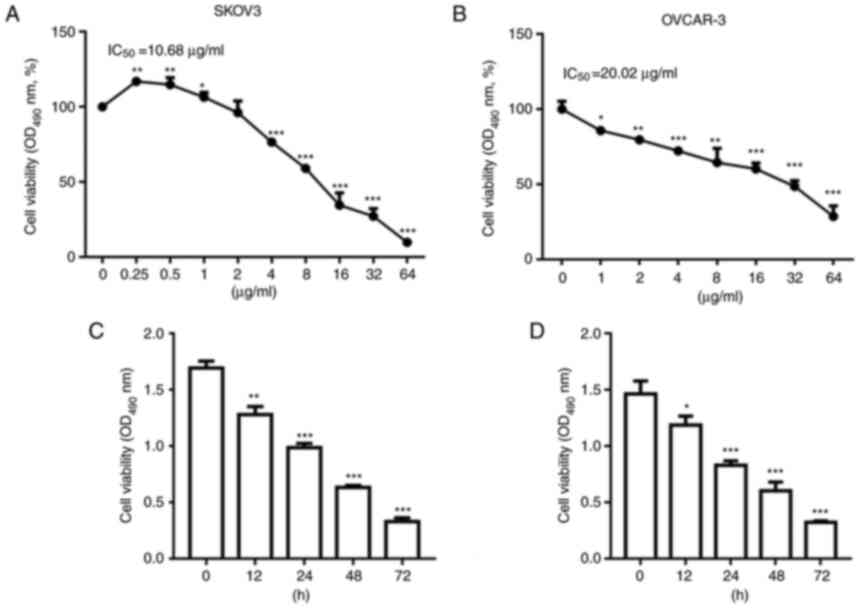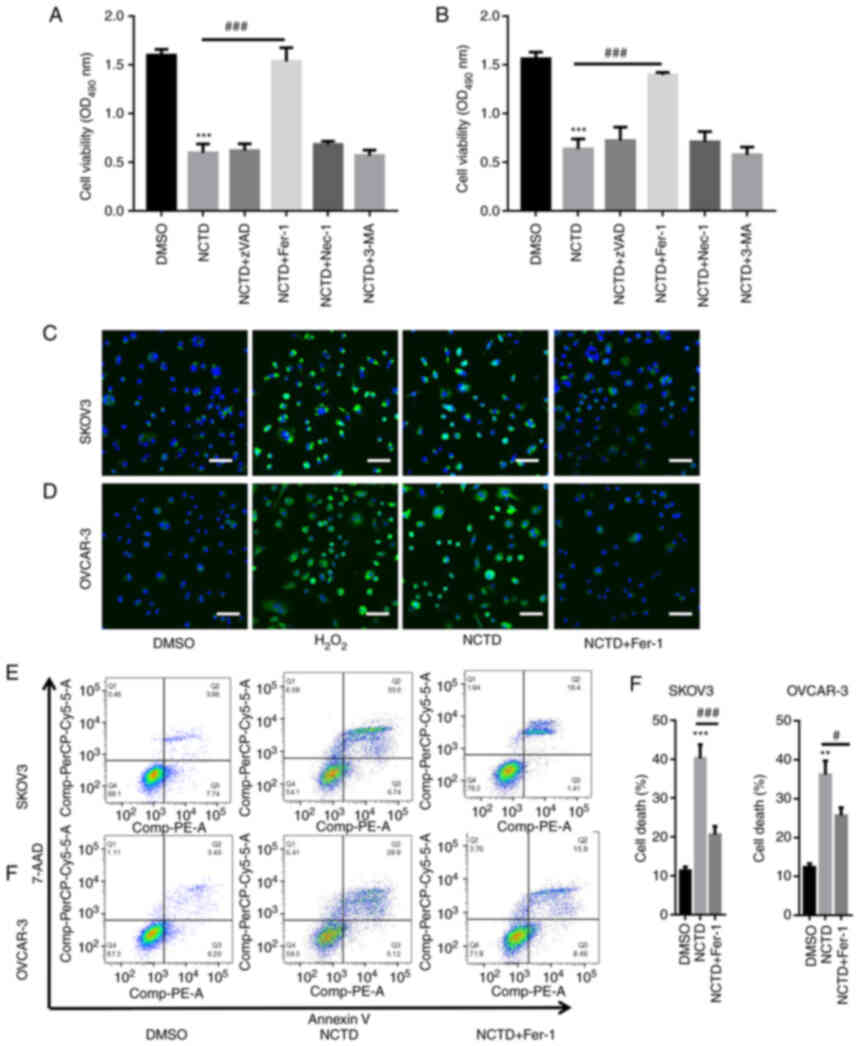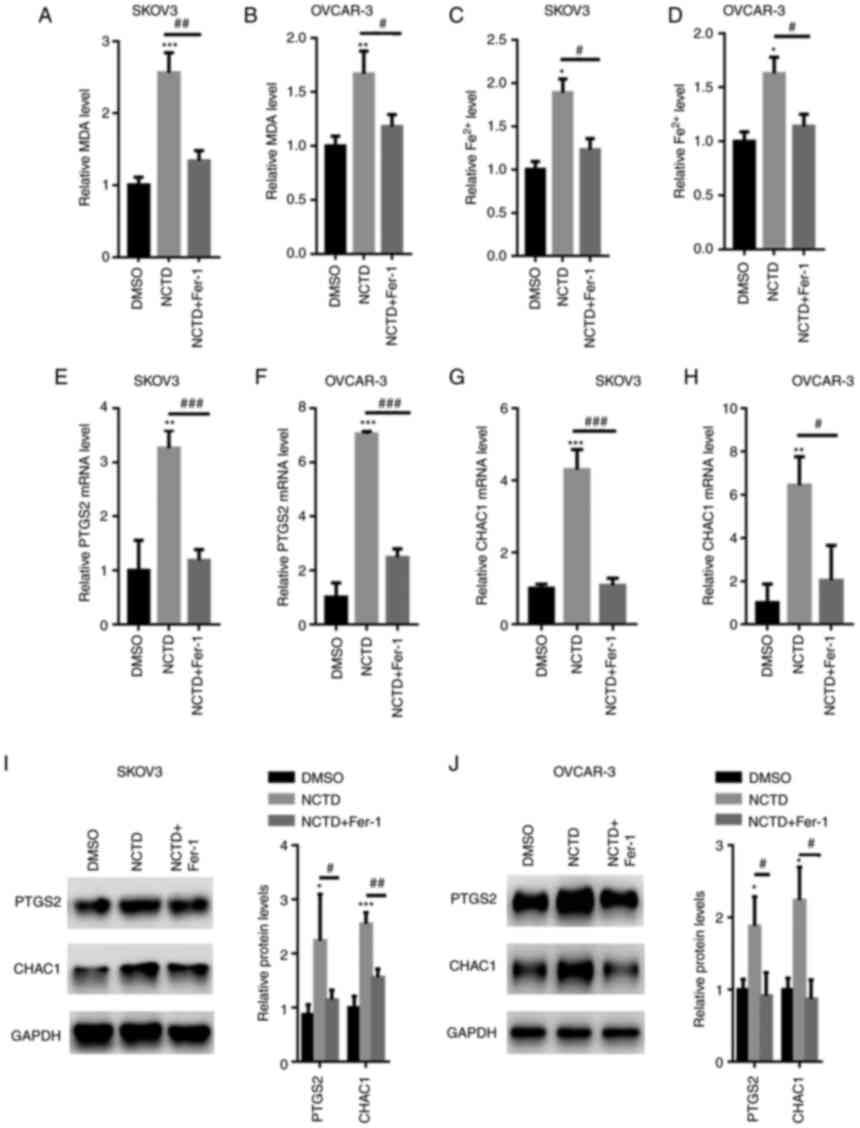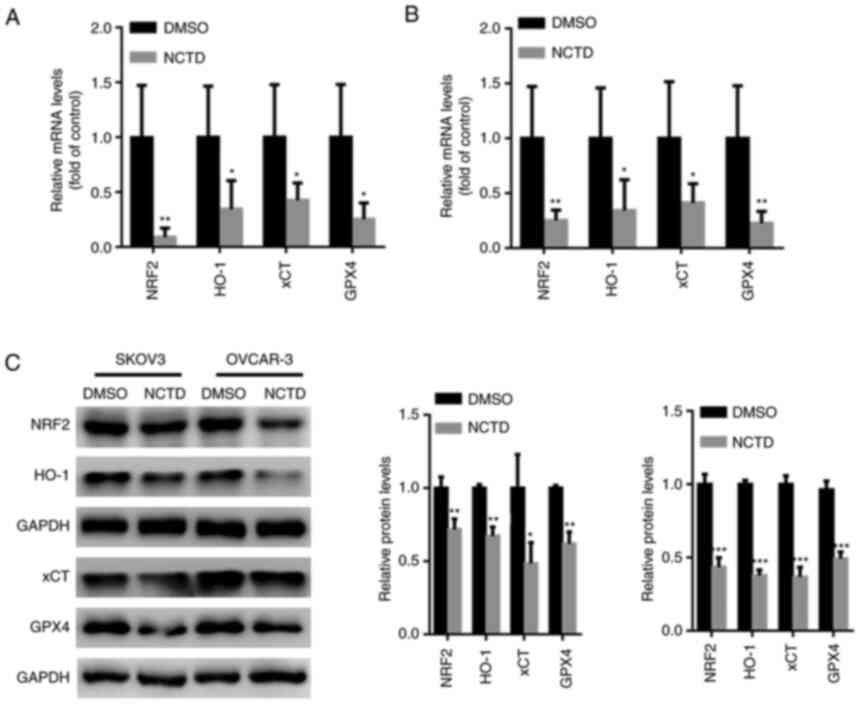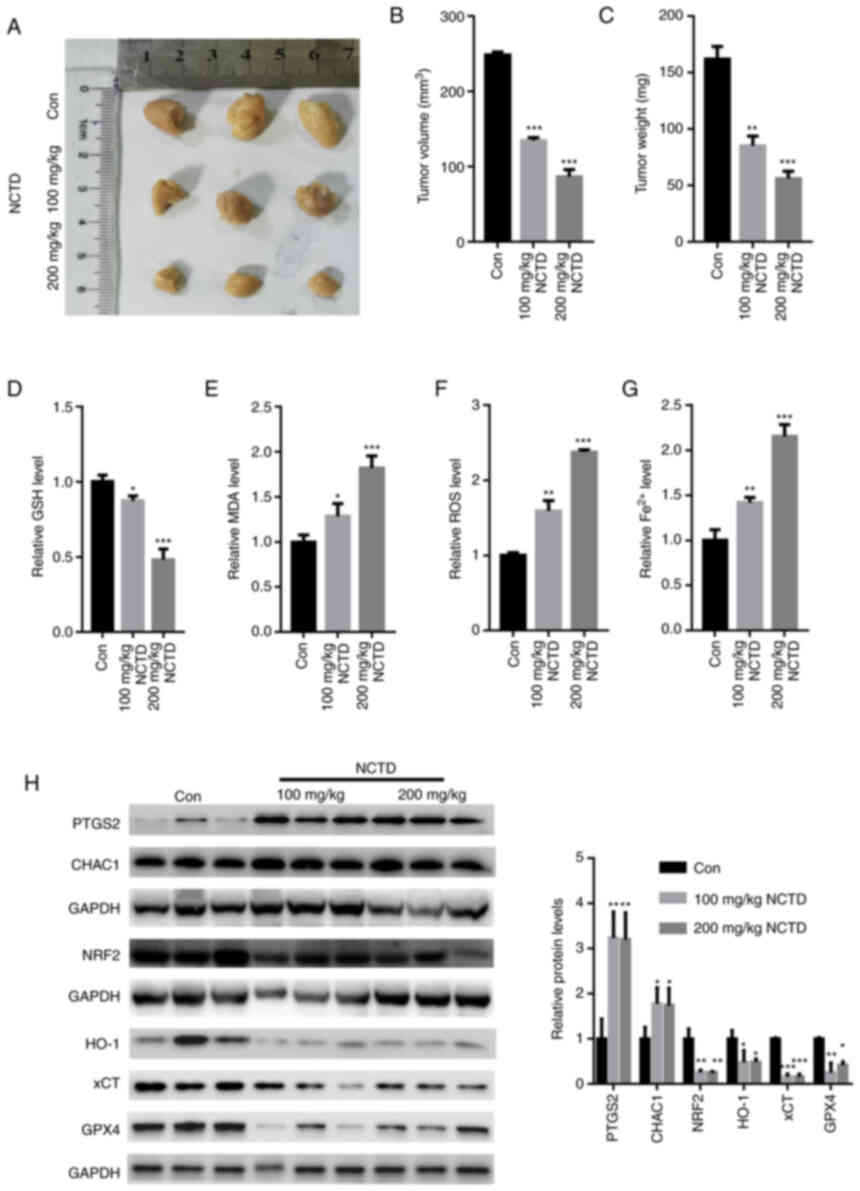|
1
|
Wang Z, Guo E, Yang B, Xiao R, Lu F, You L
and Chen G: Trends and age-period-cohort effects on mortality of
the three major gynecologic cancers in China from 1990 to 2019:
Cervical, ovarian and uterine cancer. Gynecol Oncol. 163:358–363.
2021. View Article : Google Scholar : PubMed/NCBI
|
|
2
|
Liu Y, Ren CC, Yang L, Xu YM and Chen YN:
Role of CXCL12-CXCR4 axis in ovarian cancer metastasis and
CXCL12-CXCR4 blockade with AMD3100 suppresses tumor cell migration
and invasion in vitro. J Cell Physiol. 234:3897–3909. 2019.
View Article : Google Scholar : PubMed/NCBI
|
|
3
|
Xu Y, Ma YH, Pang YX, Zhao Z, Lu JJ, Mao
HL and Liu PS: Ectopic repression of receptor tyrosine kinase-like
orphan receptor 2 inhibits malignant transformation of ovarian
cancer cells by reversing epithelial-mesenchymal transition. Tumour
Biol. 39:10104283177016272017. View Article : Google Scholar : PubMed/NCBI
|
|
4
|
Yang C, Xia BR, Zhang ZC, Zhang YJ, Lou G
and Jin WL: Immunotherapy for ovarian cancer: Adjuvant,
combination, and neoadjuvant. Front Immunol. 11:5778692020.
View Article : Google Scholar : PubMed/NCBI
|
|
5
|
Sarkar S, Malekshah OM, Nomani A, Patel N
and Hatefi A: A novel chemotherapeutic protocol for peritoneal
metastasis and inhibition of relapse in drug resistant ovarian
cancer. Cancer Med. 7:3630–3641. 2018. View Article : Google Scholar : PubMed/NCBI
|
|
6
|
Zhu L, Chen D, Zhu Y, Pan H, Xia D, Cai T,
Lin H, Lin J, Jin X, Wu F, et al: GPX4-regulated ferroptosis
mediates S100-Induced experimental autoimmune hepatitis associated
with the Nrf2/HO-1 signaling pathway. Oxid Med Cell Longev.
2021:65510692021. View Article : Google Scholar : PubMed/NCBI
|
|
7
|
Zhang Z, Fu C, Liu J, Sai X, Qin C, Di T,
Yang Y, Wu Y and Bian T: Hypermethylation of the Nrf2 promoter
induces ferroptosis by inhibiting the Nrf2-GPX4 axis in COPD. Int J
Chron Obstruct Pulmon Dis. 16:3347–3362. 2021. View Article : Google Scholar : PubMed/NCBI
|
|
8
|
Yang WS, SriRamaratnam R, Welsch ME,
Shimada K, Skouta R, Viswanathan VS, Cheah JH, Clemons PA, Shamji
AF, Clish CB, et al: Regulation of ferroptotic cancer cell death by
GPX4. Cell. 156:317–331. 2014. View Article : Google Scholar : PubMed/NCBI
|
|
9
|
Xiao X, Jiang Y, Liang W, Wang Y, Cao S,
Yan H, Gao L and Zhang L: miR-212-5p attenuates ferroptotic
neuronal death after traumatic brain injury by targeting Ptgs2. Mol
Brain. 12:782019. View Article : Google Scholar : PubMed/NCBI
|
|
10
|
Chen MS, Wang SF, Hsu CY, Yin PH, Yeh TS,
Lee HC and Tseng LM: CHAC1 degradation of glutathione enhances
cystine-starvation-induced necroptosis and ferroptosis in human
triple negative breast cancer cells via the GCN2-eIF2α-ATF4
pathway. Oncotarget. 8:114588–114602. 2017. View Article : Google Scholar : PubMed/NCBI
|
|
11
|
Dong H, Xia Y, Jin S, Xue C, Wang Y, Hu R
and Jiang H: Nrf2 attenuates ferroptosis-mediated IIR-ALI by
modulating TERT and SLC7A11. Cell Death Dis. 12:10272021.
View Article : Google Scholar : PubMed/NCBI
|
|
12
|
Feng L, Zhao K, Sun L, Yin X, Zhang J, Liu
C and Li B: SLC7A11 regulated by NRF2 modulates esophageal squamous
cell carcinoma radiosensitivity by inhibiting ferroptosis. J Transl
Med. 19:3672021. View Article : Google Scholar : PubMed/NCBI
|
|
13
|
Dong H, Qiang Z, Chai D, Peng J, Xia Y, Hu
R and Jiang H: Nrf2 inhibits ferroptosis and protects against acute
lung injury due to intestinal ischemia reperfusion via regulating
SLC7A11 and HO-1. Aging (Albany NY). 12:12943–12959. 2020.
View Article : Google Scholar : PubMed/NCBI
|
|
14
|
Song X and Long D: Nrf2 and ferroptosis: A
new research direction for neurodegenerative diseases. Front
Neurosci. 14:2672020. View Article : Google Scholar : PubMed/NCBI
|
|
15
|
Ma CS, Lv QM, Zhang KR, Tang YB, Zhang YF,
Shen Y, Lei HM and Zhu L: NRF2-GPX4/SOD2 axis imparts resistance to
EGFR-tyrosine kinase inhibitors in non-small-cell lung cancer
cells. Acta Pharmacol Sin. 42:613–623. 2021. View Article : Google Scholar : PubMed/NCBI
|
|
16
|
Zhou J, Ren Y, Tan L, Song X, Wang M, Li
Y, Cao Z and Guo C: Norcantharidin: Research advances in
pharmaceutical activities and derivatives in recent years. Biomed
Pharmacother. 131:1107552020. View Article : Google Scholar : PubMed/NCBI
|
|
17
|
Zeng D, Xiao Z, Xu Q, Luo H, Wen L, Tang
C, Shan Y, Tian J, Wei J and Li Y: Norcantharidin protects against
renal interstitial fibrosis by suppressing TWEAK-mediated Smad3
phosphorylation. Life Sci. 260:1184882020. View Article : Google Scholar : PubMed/NCBI
|
|
18
|
Wang Y, Jiang W, Li C, Xiong X, Guo H,
Tian Q and Li X: Autophagy suppression accelerates apoptosis
induced by norcantharidin in cholangiocarcinoma. Pathol Oncol Res.
26:1697–1707. 2020. View Article : Google Scholar : PubMed/NCBI
|
|
19
|
Guan Z, Chen J, Li X and Dong N:
Tanshinone IIA induces ferroptosis in gastric cancer cells through
p53-mediated SLC7A11 down-regulation. Biosci Rep.
40:BSR202018072020. View Article : Google Scholar : PubMed/NCBI
|
|
20
|
Matsumura T, Kasai M, Hayashi T, Arisawa
M, Momose Y, Arai I, Amagaya S and Komatsu Y: a-glucosidase
inhibitors from paraguayan natural medicine, nangapiry, the leaves
of Eugenia uniflora. Pharm Biol. 38:302–307. 2000. View Article : Google Scholar : PubMed/NCBI
|
|
21
|
Livak KJ and Schmittgen TD: Analysis of
relative gene expression data using real-time quantitative PCR and
the 2(−Delta Delta C(T)) Method. Methods. 25:402–408. 2001.
View Article : Google Scholar : PubMed/NCBI
|
|
22
|
Baird RC, Li S, Wang H, Naga Prasad SV,
Majdalany D, Perni U and Wu Q: Pregnancy-associated cardiac
hypertrophy in corin-deficient mice: Observations in a transgenic
model of preeclampsia. Can J Cardiol. 35:68–76. 2019. View Article : Google Scholar : PubMed/NCBI
|
|
23
|
Sun J, Hao W, Fillmore N, Ma H, Springer
D, Yu ZX, Sadowska A, Garcia A, Chen R, Muniz-Medina V, et al:
Human Relaxin-2 fusion protein treatment prevents and reverses
isoproterenol-induced hypertrophy and fibrosis in mouse heart. J Am
Heart Assoc. 8:e0134652019. View Article : Google Scholar : PubMed/NCBI
|
|
24
|
Sundaresan NR, Gupta M, Kim G, Rajamohan
SB, Isbatan A and Gupta MP: Sirt3 blocks the cardiac hypertrophic
response by augmenting Foxo3a-dependent antioxidant defense
mechanisms in mice. J Clin Invest. 119:2758–2771. 2009.PubMed/NCBI
|
|
25
|
Kopechek JA, McTiernan CF, Chen X, Zhu J,
Mburu M, Feroze R, Whitehurst DA, Lavery L, Cyriac J and Villanueva
FS: Ultrasound and microbubble-targeted delivery of a microRNA
inhibitor to the heart suppresses cardiac hypertrophy and preserves
cardiac function. Theranostics. 9:7088–7098. 2019. View Article : Google Scholar : PubMed/NCBI
|
|
26
|
Roh JL, Kim EH, Jang H and Shin D: Nrf2
inhibition reverses the resistance of cisplatin-resistant head and
neck cancer cells to artesunate-induced ferroptosis. Redox Biol.
11:254–262. 2017. View Article : Google Scholar : PubMed/NCBI
|
|
27
|
Gai C, Liu C, Wu X, Yu M, Zheng J, Zhang
W, Lv S and Li W: MT1DP loaded by folate-modified liposomes
sensitizes erastin-induced ferroptosis via regulating
miR-365a-3p/NRF2 axis in non-small cell lung cancer cells. Cell
Death Dis. 11:7512020. View Article : Google Scholar : PubMed/NCBI
|
|
28
|
Jayson GC, Kohn EC, Kitchener HC and
Ledermann JA: Ovarian cancer. Lancet. 384:1376–1388. 2014.
View Article : Google Scholar : PubMed/NCBI
|
|
29
|
Doubeni CA, Doubeni AR and Myers AE:
Diagnosis and management of ovarian cancer. Am Fam Physician.
93:937–944. 2016.PubMed/NCBI
|
|
30
|
Li L, Qiu C, Hou M, Wang X, Huang C, Zou
J, Liu T and Qu J: Ferroptosis in ovarian cancer: A novel
therapeutic strategy. Front Oncol. 11:6659452021. View Article : Google Scholar : PubMed/NCBI
|
|
31
|
Cheng Q, Bao L, Li M, Chang K and Yi X:
Erastin synergizes with cisplatin via ferroptosis to inhibit
ovarian cancer growth in vitro and in vivo. J Obstet Gynaecol Res.
47:2481–2491. 2021. View Article : Google Scholar : PubMed/NCBI
|
|
32
|
Ye Y, Dai Q, Li S, He J and Qi H: A Novel
Defined risk signature of the ferroptosis-related genes for
predicting the prognosis of ovarian cancer. Front Mol Biosci.
8:6458452021. View Article : Google Scholar : PubMed/NCBI
|
|
33
|
Yeh CB, Hsieh MJ, Hsieh YH, Chien MH,
Chiou HL and Yang SF: Antimetastatic effects of norcantharidin on
hepatocellular carcinoma by transcriptional inhibition of MMP-9
through modulation of NF-κB activity. PLoS One. 7:e310552012.
View Article : Google Scholar : PubMed/NCBI
|
|
34
|
Liu D, Shi P, Yin X, Chen Z and Zhang X:
Effect of norcantharidin on the human breast cancer Bcap-37 cells.
Connect Tissue Res. 53:508–512. 2012. View Article : Google Scholar : PubMed/NCBI
|
|
35
|
Yu CC, Ko FY, Yu CS, Lin CC, Huang YP,
Yang JS, Lin JP and Chung JG: Norcantharidin triggers cell death
and DNA damage through S-phase arrest and ROS-modulated apoptotic
pathways in TSGH 8301 human urinary bladder carcinoma cells. Int J
Oncol. 41:1050–1060. 2012. View Article : Google Scholar : PubMed/NCBI
|
|
36
|
Mei L, Sang W, Cui K, Zhang Y, Chen F and
Li X: Norcantharidin inhibits proliferation and promotes apoptosis
via c-Met/Akt/mTOR pathway in human osteosarcoma cells. Cancer Sci.
110:582–595. 2019. View Article : Google Scholar : PubMed/NCBI
|
|
37
|
Yi R, Wang H, Deng C, Wang X, Yao L, Niu
W, Fei M and Zhaba W: Dihydroartemisinin initiates ferroptosis in
glioblastoma through GPX4 inhibition. Biosci Rep.
40:BSR201933142020. View Article : Google Scholar : PubMed/NCBI
|
|
38
|
Li X, Zou Y, Xing J, Fu YY, Wang KY, Wan
PZ and Zhai XY: Pretreatment with roxadustat (FG-4592) attenuates
folic acid-induced kidney injury through antiferroptosis via
Akt/GSK-3β/Nrf2 pathway. Oxid Med Cell Longev.
2020:62869842020.PubMed/NCBI
|
|
39
|
Liu Z, Li B, Cao M and Jiang J:
Norcantharidin triggers apoptotic cell death in non-small cell lung
cancer via a mitophagy-mediated autophagy pathway. Ann Transl Med.
9:9712021. View Article : Google Scholar : PubMed/NCBI
|
|
40
|
Wu MH, Hui SC, Chen YS, Chiou HL, Lin CY,
Lee CH and Hsieh YH: Norcantharidin combined with paclitaxel
induces endoplasmic reticulum stress mediated apoptotic effect in
prostate cancer cells by targeting SIRT7 expression. Environ
Toxicol. 36:2206–2216. 2021. View Article : Google Scholar : PubMed/NCBI
|
|
41
|
Vuckovic AM, Bosello Travain V, Bordin L,
Cozza G, Miotto G, Rossetto M, Toppo S, Venerando R, Zaccarin M,
Maiorino M, et al: Inactivation of the glutathione peroxidase GPx4
by the ferroptosis-inducing molecule RSL3 requires the adaptor
protein 14-3-3ε. FEBS Lett. 594:611–624. 2020. View Article : Google Scholar : PubMed/NCBI
|
|
42
|
Wang S, Liu W, Wang J and Bai X:
Curculigoside inhibits ferroptosis in ulcerative colitis through
the induction of GPX4. Life Sci. 259:1183562020. View Article : Google Scholar : PubMed/NCBI
|
|
43
|
Lee N, Carlisle AE, Peppers A, Park SJ,
Doshi MB, Spears ME and Kim D: xCT-Driven expression of GPX4
determines sensitivity of breast cancer cells to ferroptosis
inducers. Antioxidants (Basel). 10:3172021. View Article : Google Scholar : PubMed/NCBI
|
|
44
|
Wang H, Peng S, Cai J and Bao S: Silencing
of PTPN18 induced ferroptosis in endometrial cancer cells through
p-P38-mediated GPX4/xCT down-regulation. Cancer Manag Res.
13:1757–1765. 2021. View Article : Google Scholar : PubMed/NCBI
|
|
45
|
Yang Y, Luo M, Zhang K, Zhang J, Gao T,
Connell DO, Yao F, Mu C, Cai B, Shang Y and Chen W: Nedd4
ubiquitylates VDAC2/3 to suppress erastin-induced ferroptosis in
melanoma. Nat Commun. 11:4332020. View Article : Google Scholar : PubMed/NCBI
|
|
46
|
Zhou HH, Chen X, Cai LY, Nan XW, Chen JH,
Chen XX, Yang Y, Xing ZH, Wei MN, Li Y, et al: Erastin reverses
ABCB1-mediated docetaxel resistance in ovarian cancer. Front Oncol.
9:13982019. View Article : Google Scholar : PubMed/NCBI
|















